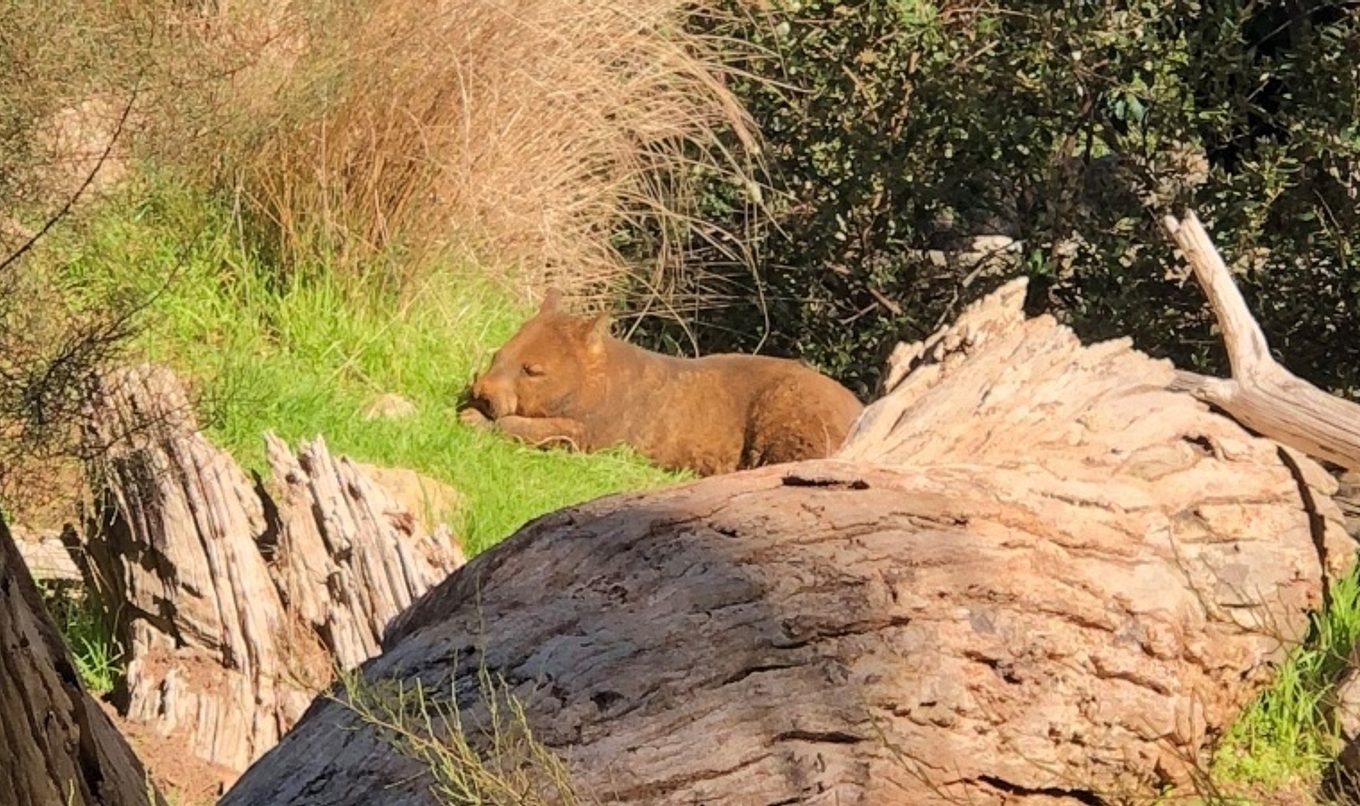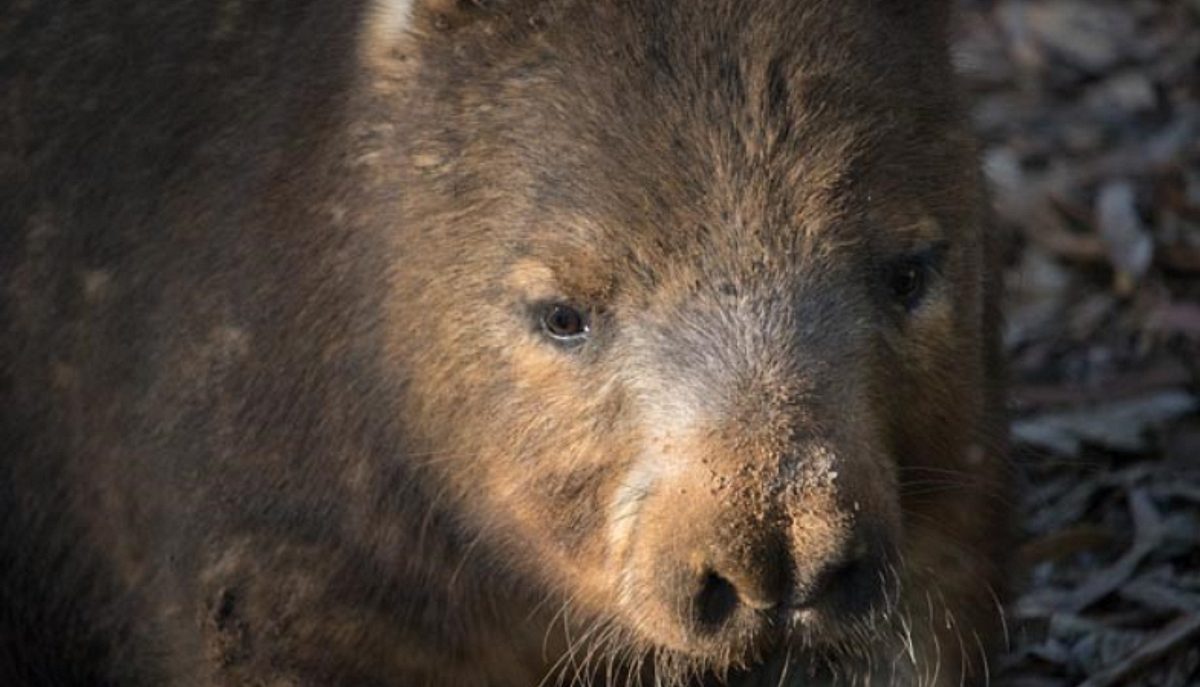Wonderful wombats feature at Cleland these school holidays
The wonderful world of wombats and their amazing evolution will be a big focus at Cleland Wildlife Park these July school holidays.

The ‘Wonderful Wombats’ exhibition is being held to celebrate the arrival of a 14-year-old Southern hairy-nosed rescue wombat called Casanova who has just joined the Cleland family.
Cleland Director Chris Daniels said Casanova is a quiet gentlemanly wombat who has taken up residence in a prestigious underground apartment in the park’s northern paddock.
“We are delighted that Casanova has joined us and our two other resident wombats – Polar and Fred,” Professor Daniels said.
“Cassanova and Polar are both Southern hairy-nosed wombats and Fred is a Common wombat who features in our ‘Wombat Encounter’ experience where visitors can enter his enclosure with his keeper and feed him.
“Casanova is settling in well to his new home and has a huge nature park enclosure to roam around with specially refurbished living quarters.
“And, as all wombats like to do, he is already borrowing to make some adjustments and extensions to his quarters. Naturally, we expected nothing less.
“We are celebrating Casanova's arrival with a special exhibition on wombats, their past, present and future.
“The exhibition is presented in partnership with Wombats SA, Minton Farm, SA Museum, Adelaide University, Flinders University and the Naracoorte Caves and tells the story of wombats from their amazing evolutionary past, to the challenges they face now and in the future.
“Entrance to the exhibition is included with the park admission ticket and visitors will learn some fascinating facts about wombats’ noses, bones, tunnels and bottoms.”
Information about the Wonderful Wombats exhibition, as well as other school holiday activities such as a children’s ‘Burrow Adventure’, is available on the Cleland Wildlife Park website.
Fast facts about Southern hairy-nosed wombats
- Southern hairy-nosed wombats are generally the smallest of the three living species of wombats and also the koala’s closest living relative.
- The Southern hairy-nosed wombat is South Australia’s state faunal (animal) emblem. They are found in the south-east of Western Australia and in southern South Australia.
- They live in semi-arid to arid grassland and woodland environments.
- These sturdy marsupials are more likely to be seen waddling, but if they need to, they can run at up to 40km per hour.
- They are usually a brownish-grey in colour and have a broad, furred nose and long ears.
- Adults range in size from 75cm to 100cm in length and usually weigh up to 32kg but can be as heavy as 40 kg.
- They have a strong, stocky build with short legs and large front feet. Their feet have flattened claws and five digits. The second and third toes of their hind feet are fused and have a double claw which is used for grooming.
- Because Southern hairy-nosed wombats live on very rough diets, their teeth keep growing their whole life and their incisors are similar in shape to a rodent. Normal feeding keeps the teeth worn down.
- They are herbivores and like to eat young grasses. They will also eat farmed crops, shrubs and their leaves, roots, bark, moss and underground tubers.
- Their digestive tract has a very small caecum and a colon divided into sections. The first section is where food is fermented and the next is larger and reabsorbs water. Due to their slow metabolism, food can take eight days to be processed.
- Living in a dry climate means they need to conserve water, so their digestive tract helps to produce less urine. This results in very dry faeces. Oddly, their faecal pellets are almost cubic in shape.
- Wombats dig burrows that can extend up to three metres underground and are joined to form warrens that are shared by five to 10 adult wombats. The central warren is surrounded by a circle of smaller burrows. The tunnel and chamber system can have a radius of several hundred metres. Air flow is assured by having numerous entrances all around the warren system.
- Southern hairy-nosed wombats prefer a burrow temperature of around 15 degrees Celsius in winter and around 25 degrees Celsius in summer. In the heat of an Australian summer they stay underground during the day.
- Breeding takes place when food supplies are plentiful and might not happen in years of low rainfall.
- As a marsupial, the Southern hairy-nosed wombat has a backwards facing pouch where the young develop. The direction of the pouch also means the joey is protected from dirt if the mother is digging.
- The wombat usually gives birth to a single joey, which is blind and hairless at birth and weighs around two grams. It crawls into the pouch and attaches to one of the two teats, which will swell around the joey’s mouth so it doesn’t fall out of the pouch. The joey will remain in the pouch for eight to nine months. After emerging it will still suckle but also start eating solid food, and will stay with its mother for another year or more.
- Southern hairy-nosed wombats are believed to live for up to 15 years in the wild but in captivity they have been recorded as surviving well into their 30s. Their main threats are habitat loss, vehicle accidents, drought and competition from other grazers.


